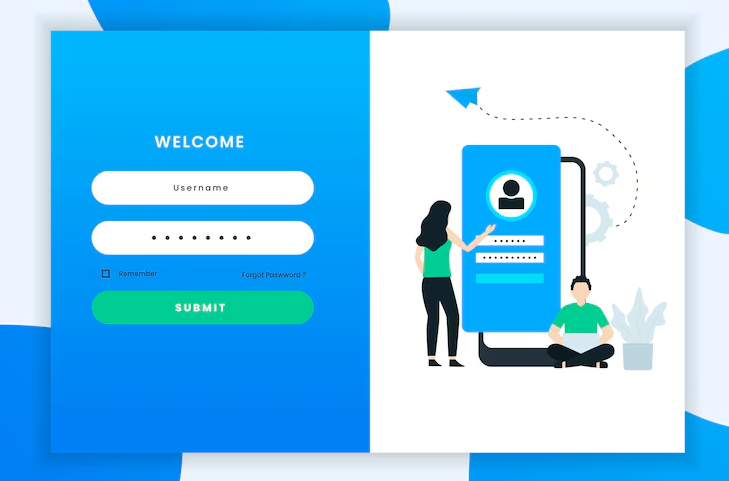In today’s digital age, social media has become an essential part of how we communicate, share our lives, and stay connected. However, the very platforms that connect us also expose us to various risks such as hacking, identity theft, and privacy breaches. Securing your social media accounts is no longer just an option but a necessity. A Guide to Securing Your Social Media Accounts is essential for anyone who wants to protect their personal information online.
This comprehensive guide will walk you through the key steps to help you safeguard your accounts. Let’s dive into A Guide to Securing Your Social Media Accounts with practical tips you can implement today.
1. Use Strong and Unique Passwords
The foundation of securing your social media accounts starts with a strong and unique password. Following A Guide to Securing Your Social Media Accounts, it’s important to create passwords that are difficult to guess.
- Create complex passwords: Use a combination of upper and lowercase letters, numbers, and special characters. Passwords like “P@ssw0rd123” are much stronger than simple words.
- Avoid common passwords: Avoid predictable passwords like “123456” or “password”. These are the first passwords that hackers will try.
- Use a password manager: Password managers like LastPass or 1Password can help generate and securely store complex passwords, ensuring each account has its own unique password.
In A Guide to Securing Your Social Media Accounts, this is one of the most vital steps to take in protecting your personal information.
2. Enable Two-Factor Authentication (2FA)
Two-factor authentication (2FA) adds an additional layer of protection, making it harder for hackers to gain access to your accounts. By following A Guide to Securing Your Social Media Accounts, you can set up 2FA across all your social media accounts.
- Authentication apps: Use apps like Google Authenticator or Authy to receive time-sensitive codes when logging into your account.
- SMS codes: While SMS is less secure, it still provides an added layer of protection compared to relying on just a password.
- Hardware tokens: For the highest security, consider using a physical token like a YubiKey.
These steps, as outlined in A Guide to Securing Your Social Media Accounts, make unauthorized access significantly more difficult.
3. Review and Update Privacy Settings Regularly
One of the simplest yet most effective ways to secure your social media accounts is by reviewing and updating your privacy settings. A Guide to Securing Your Social Media Accounts would not be complete without this crucial step:
- Set profiles to private: By default, keep your social media accounts set to private or restricted.
- Customize audience settings: Platforms like Facebook allow you to control who can see your posts and profile information.
- Revoke third-party app access: Ensure you review the apps that have access to your social media accounts and remove any that you no longer use or trust.
Following these steps will allow you to take charge of your privacy, in line with A Guide to Securing Your Social Media Accounts.
4. Monitor Account Activity Regularly
Regularly checking your account activity is key to catching any suspicious behavior early. In A Guide to Securing Your Social Media Accounts, it’s recommended to keep an eye on your login history and activity.
- Review login history: Most social media platforms allow you to view a history of logins and devices used. If something seems off, investigate further.
- Set login alerts: Turn on alerts to notify you of any new login attempts or unfamiliar devices.
By monitoring your activity regularly, as advised in A Guide to Securing Your Social Media Accounts, you can catch potential threats before they escalate.
5. Be Wary of Phishing Scams
Phishing is a common way for hackers to gain access to your personal information. Following A Guide to Securing Your Social Media Accounts, here are some steps to protect yourself:
- Don’t click suspicious links: Phishing attempts often come in the form of emails or direct messages with links that lead to fake websites.
- Verify the source: Before providing any personal information, always verify the authenticity of the sender.
- Use official websites: Log in directly from the official website or app, not from links in emails or messages.
Avoiding phishing scams is crucial to securing your social media accounts, as emphasized in A Guide to Securing Your Social Media Accounts.
6. Regularly Update Your Software and Applications
Outdated software can leave your social media accounts vulnerable to attacks. According to A Guide to Securing Your Social Media Accounts, you should:
- Enable automatic updates: This ensures that your apps and operating systems are always up-to-date with the latest security patches.
- Install antivirus software: Reliable antivirus programs can help detect and block malicious software.
Keeping everything updated is a critical part of A Guide to Securing Your Social Media Accounts and maintaining your security.
7. Avoid Public Wi-Fi for Sensitive Activities
Public Wi-Fi networks can expose you to significant risks when accessing your social media accounts. Following A Guide to Securing Your Social Media Accounts, avoid logging in to important accounts when connected to public Wi-Fi networks.
- Use a VPN: A Virtual Private Network (VPN) encrypts your internet connection, helping keep your online activity secure.
- Don’t log in on public Wi-Fi: Avoid accessing sensitive accounts like banking or social media on unsecured public networks.
This is another important step in A Guide to Securing Your Social Media Accounts, helping protect your data from hackers.
8. Stay Informed About Social Media Scams
Scammers are constantly evolving their tactics to steal your personal information. A Guide to Securing Your Social Media Accounts advises staying informed about the latest scams:
- Follow security blogs: Websites like Krebs on Security keep you updated on the latest threats and scams.
- Report scams: If you encounter suspicious activity on social media, report it immediately to the platform.
Educating yourself and staying vigilant, as highlighted in A Guide to Securing Your Social Media Accounts, can make a big difference in keeping your data safe.
9. Backup Your Social Media Data
Having a backup of your social media data can be lifesaving if your account is compromised or deleted. A Guide to Securing Your Social Media Accounts includes backing up your important information:
- Download account data: Many social platforms, like Facebook, allow you to download a copy of your posts, photos, and messages.
- Store important files: Keep a copy of critical files in secure, offline storage.
By keeping backups, as suggested in A Guide to Securing Your Social Media Accounts, you ensure that you won’t lose valuable data.
10. Plan for Account Recovery
Sometimes, even the most secure accounts can get hacked. Be prepared by following A Guide to Securing Your Social Media Accounts and setting up account recovery options:
- Set up recovery options: Update your email address and phone number for easier recovery in case of a breach.
- Use backup codes: Many social media platforms provide recovery codes that you can use if you’re locked out of your account.
Having a recovery plan in place, as emphasized in A Guide to Securing Your Social Media Accounts, will help you regain access to your account quickly if necessary.
Conclusion
Securing your social media accounts requires vigilance and proactive effort. Following A Guide to Securing Your Social Media Accounts, you can significantly reduce the risks of unauthorized access, hacking, and data theft. By regularly updating passwords, using 2FA, and monitoring your account activity, you can protect your online presence and personal information. Remember, your digital security is in your hands—take the necessary steps today to protect your accounts.



